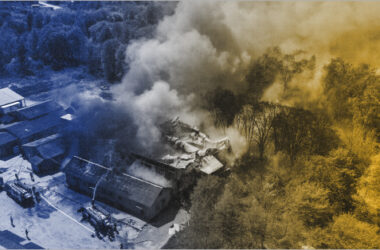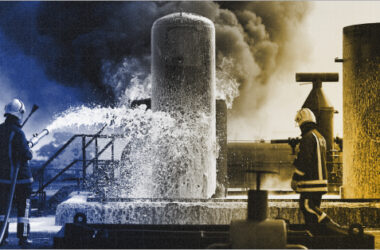If you own a business, you must have felt that navigating the world of business insurance is like trying to decipher ancient scrolls. Well, you are not alone! Especially when it comes to Fire Insurance in India, misconceptions can run rampant. This blog is here to extinguish those insurance myths and leave you feeling empowered with knowledge. We will tackle the top 10 most common Fire Insurance misconceptions for businesses in India. So, let’s start our journey, let’s separate fact from fiction and ensure your business is properly protected in case of the unexpected.
Demystifying 10 Common Misconceptions about Fire Insurance India
Let’s dig deeper into 10 common misconceptions about Fire Insurance in India:
Misconception 1: A Fire Insurance Policy only covers damage caused by fire
Reality: While Fire Insurance primarily covers damage caused by fire, it typically extends to other perils as well, such as lightning, explosions, riots, storms, and more. Modern Fire Insurance India policies often provide comprehensive coverage against a range of risks, offering financial protection beyond fire-related incidents.
Misconception 2: Any Business insurance includes fire coverage by default
Reality: Many business owners assume that any type of business insurance automatically includes fire coverage, but this may not always be the case. Business insurance policies vary in coverage and may require specific add-ons or endorsements for fire protection. It’s essential for business owners to review their policies carefully and ensure they have adequate Fire Insurance coverage in place.
Misconception 3: Fire Insurance is only for businesses or commercial properties
Reality: While Fire Insurance is essential for businesses and commercial properties, it’s equally crucial for homeowners. Residential properties are also susceptible to fire-related risks, and having adequate insurance coverage can provide financial security in the event of a fire-related loss.
Misconception 4: Fire Insurance premiums are prohibitively expensive
Reality: The cost of Fire Insurance Policy premiums depends on various factors, including the value of the insured property, its location, construction material, fire safety measures in place and more. While premiums may vary, fire insurance is generally affordable and offers valuable protection against significant financial losses.
Misconception 5: Fire Insurance covers the full replacement cost of the property.
Reality: A Fire Insurance Policy in India typically covers the actual cash value (ACV) or the replacement cost value (RCV) of the insured property, depending on the policy terms. ACV takes depreciation into account, while RCV covers the cost of replacing or repairing the property without deducting depreciation. It’s essential to understand the coverage limits and policy terms to ensure adequate protection.
Misconception 6: Fire Insurance is unnecessary if the property is equipped with fire safety measures.
Reality: While fire safety measures can mitigate the risk of fire-related incidents, they cannot guarantee complete prevention. Accidents and unforeseen circumstances can still lead to fires, making Fire Insurance essential for financial protection. Additionally, insurers may offer discounts for properties with adequate fire safety measures in place.
Misconception 7: Fire Insurance claims are always straightforward and hassle-free.
Reality: While insurance companies strive to process claims efficiently, the claims process may not always be straightforward. Documentation requirements, investigations, and evaluations are standard procedures in the claims process. It’s essential for policyholders to maintain accurate records and cooperate with the insurer to expedite the claims process.
Misconception 8: Fire Insurance covers damage to the contents of the property as well.
Reality: A Fire Insurance Policy typically covers damage to the structure of the insured property, including buildings and fixtures. However, coverage for contents such as furniture, appliances, and personal belongings may require additional endorsements or separate contents insurance. Policyholders should review their coverage options to ensure comprehensive protection.
Misconception 9: Fire Insurance is only necessary for high-risk areas( such as those prone to wildfires)
Reality: While properties in high-risk areas may have a greater likelihood of fire-related incidents, fires can occur anywhere, including urban, suburban and rural areas. Factors such as faulty wiring, kitchen accidents, arson and natural disasters can lead to fires in any location. Fire Insurance is essential regardless of the property’s geographical location.
Misconception 10: Fire Insurance is a one-size-fits-all solution
Reality: Fire Insurance Policies vary in terms of coverage, limits, deductibles and exclusions. It’s crucial for individuals and businesses to assess their specific insurance needs and select a policy that aligns with their requirements. Customizing coverage options and seeking guidance from insurance professionals can ensure adequate protection against fire-related risks.
Conclusion
Fire Insurance plays a vital role in mitigating financial losses resulting from fire-related incidents for individuals and businesses in India. By debunking common misconceptions about Fire Insurance, we can promote greater awareness and understanding of the importance of adequate insurance coverage. It’s essential for business owners to assess their risk exposure, review their insurance policies regularly, and make informed decisions to safeguard their financial interests against fire-related risks.








